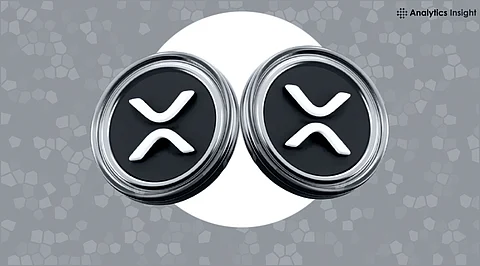XRP Activity Drops as Bitcoin's Bull Run Gains Momentum
Key Takeaways
Bitcoin continues its strong bull run, driven by institutional demand and ETF momentum.
XRP sees a sharp decline in network activity, with fewer transactions and active users.
Market sentiment favors Bitcoin, while XRP faces technical resistance and low trading interest.
The cryptocurrency market is seeing a strong upswing, led by a fresh bull run in Bitcoin. While Bitcoin continues to attract major investments and attention, XRP is moving in the opposite direction. On-chain activity for XRP has fallen sharply, and trading volumes are also declining. This contrast highlights how different digital assets respond to changing market dynamics.
Bitcoin’s Bull Run Gains Strength
Bitcoin is currently trading around $105,000, having recently touched highs near $112,000. Although it has pulled back slightly from that peak, it continues to show strength. Market experts believe Bitcoin is benefiting from strong demand, especially from institutional investors such as large companies, hedge funds, and investment firms.
Data from crypto platforms shows that most of the recent Bitcoin purchases are not from individual retail investors but from bigger institutions. Many of them are buying Bitcoin as a hedge against inflation or as a long-term investment. The growing popularity of Bitcoin Exchange Traded Funds (ETFs) has also played a big role, attracting more serious money into the market.
The amount of Bitcoin held on exchanges has decreased, which is usually seen as a bullish signal. It suggests that investors are moving their Bitcoin to private wallets for long-term holding rather than trading it in the short term.
Some technical analysts warn that if Bitcoin falls below the support levels of $101,000 to $104,000, it may see a deeper correction before resuming its upward trend.
Also Read - XRP Could Plunge vs BTC: Double Death Cross Sparks Alarm
XRP Activity Falls to Multi-Month Lows
In contrast to Bitcoin’s rise, XRP is struggling to keep up. Although its price is holding around $2.24, its network activity has dropped significantly.
Daily Transactions: The XRP Ledger, which is the blockchain network that powers XRP, is now processing just over 320,000 payments per day. This is a big drop compared to over a million transactions seen in earlier months.
Active Wallets: The number of active XRP wallet addresses has also fallen, now below 10,000 daily users. This indicates fewer people are sending or receiving XRP on the network.
Burned XRP: The amount of XRP burned as transaction fees has dropped to about 1,500 XRP per day, the lowest in months. When XRP transactions are made, a small amount of the token is burned. Lower burns reflect lower overall usage.
Futures Trading: Open interest in XRP futures, which indicates how much money is currently tied up in XRP derivatives, has dropped from $4.55 billion to $4.11 billion. This shows that traders are losing interest or becoming more cautious.
On-chain data also reveals that the number of active addresses recently dropped from over 42,000 to 28,000, before bouncing back slightly to 31,000. This kind of activity suggests a cooling of user interest in the network.
Why XRP Isn’t Keeping Up
Several reasons explain why XRP is not seeing the same growth as Bitcoin:
Low Usage: Fewer payments and transactions are happening on the XRP Ledger.
Falling Interest: Both traders and regular users appear to be moving to other cryptocurrencies or staying away.
Weak Chart Patterns: Technical indicators show that XRP is under pressure and lacks the strength to break out.
Speculative Focus Elsewhere: Right now, the spotlight is on Bitcoin and other top-performing assets. XRP is not attracting as much attention or investment.
Regulatory and Institutional Landscape
While XRP did gain some support earlier this year due to positive news from its legal battle with the U.S. Securities and Exchange Commission (SEC), that momentum seems to have faded. Bitcoin, meanwhile, continues to benefit from clear regulatory status in many regions and growing acceptance among financial institutions.
Recent developments, including clearer guidelines for staking and digital asset classifications, have helped boost overall investor confidence in the crypto market. Bitcoin is reaping the most benefits from this improved environment, while XRP struggles to regain traction.
Also Read - Bitcoin Sees Inflows While Ethereum Faces Silent Outflows
Price Predictions and Future Outlook
For Bitcoin:
If it can break and stay above the resistance range of $108,000 to $110,000, analysts believe it could revisit its all-time high near $113,000, or even push toward $120,000 in the coming weeks.
On the downside, a break below $100,000 might lead to profit-taking and a fall toward $95,000 or even $73,000, though that’s considered a more bearish scenario.
For XRP:
It needs to hold support around $2.13 to $2.20 to avoid further decline.
A clean breakout above $2.30 could allow a run toward $2.45 to $2.60, but this will require a surge in volume and investor interest.
Some market observers believe XRP may not see significant price action until late July or even November unless there's a sudden catalyst or broader market shift.
What to Watch Next
Some important occurrences investors need to tune into are:
If Bitcoin can break above the $108K level and continue its march toward $120K
If XRP regains activity on its blockchain and interest from traders
If there are new developments, legal, institutional, or technical, that could shift momentum for XRP
How broader economic factors like inflation, interest rates, and regulatory decisions affect the next phase of the bull run
The coming weeks will be crucial for both Bitcoin and XRP. While Bitcoin remains firmly in the lead, XRP has work to do to catch up and re-establish its position in the market.
.png)

